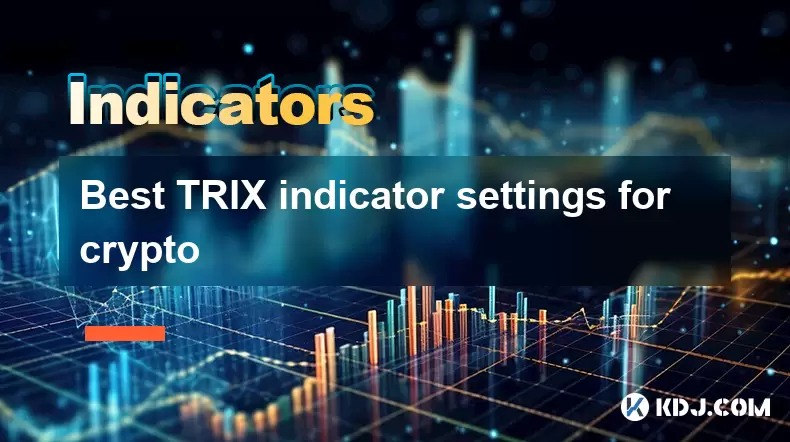-
 Bitcoin
Bitcoin $120400
1.77% -
 Ethereum
Ethereum $3615
7.90% -
 XRP
XRP $3.580
17.84% -
 Tether USDt
Tether USDt $1.001
0.06% -
 BNB
BNB $729.4
1.25% -
 Solana
Solana $179.9
5.04% -
 USDC
USDC $0.0000
0.01% -
 Dogecoin
Dogecoin $0.2311
8.22% -
 TRON
TRON $0.3226
4.04% -
 Cardano
Cardano $0.8490
12.85% -
 Hyperliquid
Hyperliquid $46.45
0.72% -
 Stellar
Stellar $0.4913
8.54% -
 Sui
Sui $4.027
2.00% -
 Chainlink
Chainlink $18.51
11.67% -
 Hedera
Hedera $0.2818
21.51% -
 Avalanche
Avalanche $24.03
7.40% -
 Bitcoin Cash
Bitcoin Cash $508.5
2.90% -
 Shiba Inu
Shiba Inu $0.00001496
3.24% -
 UNUS SED LEO
UNUS SED LEO $8.961
1.83% -
 Toncoin
Toncoin $3.264
3.13% -
 Litecoin
Litecoin $104.6
8.15% -
 Polkadot
Polkadot $4.389
6.11% -
 Uniswap
Uniswap $9.924
10.63% -
 Monero
Monero $337.9
0.49% -
 Pepe
Pepe $0.00001376
2.79% -
 Bitget Token
Bitget Token $4.830
2.46% -
 Ethena USDe
Ethena USDe $1.001
0.05% -
 Dai
Dai $1.000
0.02% -
 Aave
Aave $325.2
1.66% -
 Bittensor
Bittensor $423.7
-0.85%
Best TRIX indicator settings for crypto
The TRIX indicator helps crypto traders spot momentum shifts and filter noise, offering clearer buy/sell signals through customizable settings and signal line crossovers.
Jul 18, 2025 at 11:35 am

Understanding the TRIX Indicator in Cryptocurrency Trading
The TRIX (Triple Exponential Average) indicator is a momentum oscillator widely used by traders to identify oversold and overbought conditions, as well as potential trend reversals. In the context of cryptocurrency trading, where volatility is high and trends can shift rapidly, the TRIX indicator helps filter out market noise and provides clearer signals for entry and exit points.
Unlike simple moving averages, TRIX calculates the rate of change of a triple exponentially smoothed moving average. This makes it highly effective in detecting subtle changes in momentum before they appear on price charts. For crypto traders, understanding how to optimize its settings based on different market conditions is crucial.
Default vs Customized TRIX Settings
The default setting for the TRIX indicator is typically 14 periods, which works well for many traditional markets. However, cryptocurrencies exhibit higher volatility and faster price movements, making the default period less effective in some cases.
Some traders prefer adjusting the period to 9 or 12 to increase sensitivity and responsiveness to recent price changes. Short-term traders might use 7-period TRIX settings for scalping strategies. The key lies in aligning the TRIX period with your trading timeframe—shorter periods for intraday trading and longer periods for swing trading.
It's important to test various settings on historical data before applying them to live trading. Using backtesting tools available on platforms like TradingView or Binance’s native charting features can help determine optimal values for specific cryptocurrencies.
Using TRIX with Signal Line Crossovers
One of the most popular methods of interpreting the TRIX indicator involves signal line crossovers. A signal line is usually a 9-period exponential moving average (EMA) of the TRIX line itself. When the TRIX crosses above the signal line, it may indicate a buy signal, while a cross below suggests a sell signal.
In fast-moving crypto markets, false signals are common. To mitigate this, traders often combine TRIX with other filters such as volume indicators or RSI levels. For example, only taking a buy signal when TRIX crosses above the signal line and RSI is above 50 can increase the reliability of trades.
Additionally, using multi-timeframe analysis—such as checking TRIX signals on both 1-hour and 4-hour charts—can provide more robust confirmation before entering positions.
TRIX Histogram for Momentum Confirmation
Many modern charting platforms display the TRIX histogram, which represents the difference between the TRIX line and its signal line. A rising histogram indicates increasing bullish momentum, while a falling histogram shows weakening momentum.
For crypto traders, the histogram can be especially useful during sideways or consolidation phases. If the histogram begins to rise after a prolonged decline, it could signal an upcoming breakout. Conversely, a shrinking histogram during a strong uptrend may suggest that the rally is losing steam.
Traders can also look for divergences between the TRIX histogram and price action. For instance, if the price makes new highs but the TRIX histogram fails to do so, this bearish divergence could warn of a potential reversal.
Combining TRIX with Moving Averages for Better Accuracy
To further enhance the performance of the TRIX indicator, many traders overlay it with moving averages. A commonly used approach is combining TRIX with a 200-period EMA to determine the overall trend direction.
When the price is above the 200 EMA and TRIX is positive, it reinforces the strength of the uptrend. On the flip side, if the price is below the 200 EMA and TRIX is negative, it confirms a downtrend. These combinations help filter out weak signals and reduce whipsaws.
Another strategy involves using TRIX alongside shorter-term EMAs like the 20 or 50 EMA. For example, a bullish crossover in TRIX combined with a golden cross in EMAs can serve as a powerful confluence point for entering long positions.
Frequently Asked Questions (FAQs)
Q: Can I use the same TRIX settings across all cryptocurrencies?
A: While you can start with a standard setting like 14, each cryptocurrency behaves differently due to varying liquidity and volatility. It's recommended to optimize TRIX settings individually for each asset through backtesting.
Q: How does TRIX compare to MACD in crypto trading?
A: Both TRIX and MACD are momentum indicators, but TRIX is more sensitive to small price changes due to its triple smoothing process. In volatile crypto markets, TRIX may produce fewer false signals than MACD, especially when combined with proper filtering techniques.
Q: Should I rely solely on TRIX for trading decisions?
A: No single indicator should be used in isolation. TRIX works best when combined with other tools like volume analysis, support/resistance levels, or volatility indicators. This multi-indicator approach enhances accuracy and reduces risk.
Q: Is TRIX suitable for day trading crypto assets?
A: Yes, TRIX is well-suited for day trading, particularly when using shorter timeframes and adjusted periods (e.g., 7 or 9). However, day traders must also incorporate real-time sentiment analysis and order flow data to improve decision-making.
Disclaimer:info@kdj.com
The information provided is not trading advice. kdj.com does not assume any responsibility for any investments made based on the information provided in this article. Cryptocurrencies are highly volatile and it is highly recommended that you invest with caution after thorough research!
If you believe that the content used on this website infringes your copyright, please contact us immediately (info@kdj.com) and we will delete it promptly.
- Bitcoin, Crypto Wallets, and Security: Staying Safe in the Wild West of Digital Finance
- 2025-07-18 16:30:12
- Bitget Launchpool Heats Up with Caldera (ERA) Token Rewards!
- 2025-07-18 16:50:12
- XLM Bullish Chart: Analyst Sees Stellar Opportunity
- 2025-07-18 17:10:13
- Memeclip Presale: The 100x Potential CT Degens Are Buzzing About
- 2025-07-18 16:30:12
- Twitter, Investors, and PENGU Trade: Decoding the Signals
- 2025-07-18 17:10:13
- DeFi Liquidity on Fire: Kadena's Chainweb EVM Heats Up!
- 2025-07-18 17:15:13
Related knowledge

Advanced RSI strategies for crypto
Jul 13,2025 at 11:01am
Understanding the Basics of RSI in Cryptocurrency TradingThe Relative Strength Index (RSI) is a momentum oscillator used to measure the speed and chan...

Crypto RSI for day trading
Jul 12,2025 at 11:14am
Understanding RSI in the Context of Cryptocurrency TradingThe Relative Strength Index (RSI) is a momentum oscillator used to measure the speed and cha...

Crypto RSI for scalping
Jul 12,2025 at 11:00pm
Understanding RSI in the Context of Crypto TradingThe Relative Strength Index (RSI) is a momentum oscillator widely used by traders to measure the spe...

What does an RSI of 30 mean in crypto
Jul 15,2025 at 07:07pm
Understanding RSI in Cryptocurrency TradingRelative Strength Index (RSI) is a momentum oscillator widely used in cryptocurrency trading to measure the...

What does an RSI of 70 mean in crypto
Jul 13,2025 at 06:07pm
Understanding the RSI Indicator in Cryptocurrency TradingThe Relative Strength Index (RSI) is a widely used technical analysis tool that helps traders...

Does RSI work in a bear market for crypto
Jul 16,2025 at 01:36pm
Understanding RSI in Cryptocurrency TradingThe Relative Strength Index (RSI) is a momentum oscillator used by traders to measure the speed and change ...

Advanced RSI strategies for crypto
Jul 13,2025 at 11:01am
Understanding the Basics of RSI in Cryptocurrency TradingThe Relative Strength Index (RSI) is a momentum oscillator used to measure the speed and chan...

Crypto RSI for day trading
Jul 12,2025 at 11:14am
Understanding RSI in the Context of Cryptocurrency TradingThe Relative Strength Index (RSI) is a momentum oscillator used to measure the speed and cha...

Crypto RSI for scalping
Jul 12,2025 at 11:00pm
Understanding RSI in the Context of Crypto TradingThe Relative Strength Index (RSI) is a momentum oscillator widely used by traders to measure the spe...

What does an RSI of 30 mean in crypto
Jul 15,2025 at 07:07pm
Understanding RSI in Cryptocurrency TradingRelative Strength Index (RSI) is a momentum oscillator widely used in cryptocurrency trading to measure the...

What does an RSI of 70 mean in crypto
Jul 13,2025 at 06:07pm
Understanding the RSI Indicator in Cryptocurrency TradingThe Relative Strength Index (RSI) is a widely used technical analysis tool that helps traders...

Does RSI work in a bear market for crypto
Jul 16,2025 at 01:36pm
Understanding RSI in Cryptocurrency TradingThe Relative Strength Index (RSI) is a momentum oscillator used by traders to measure the speed and change ...
See all articles

























































































